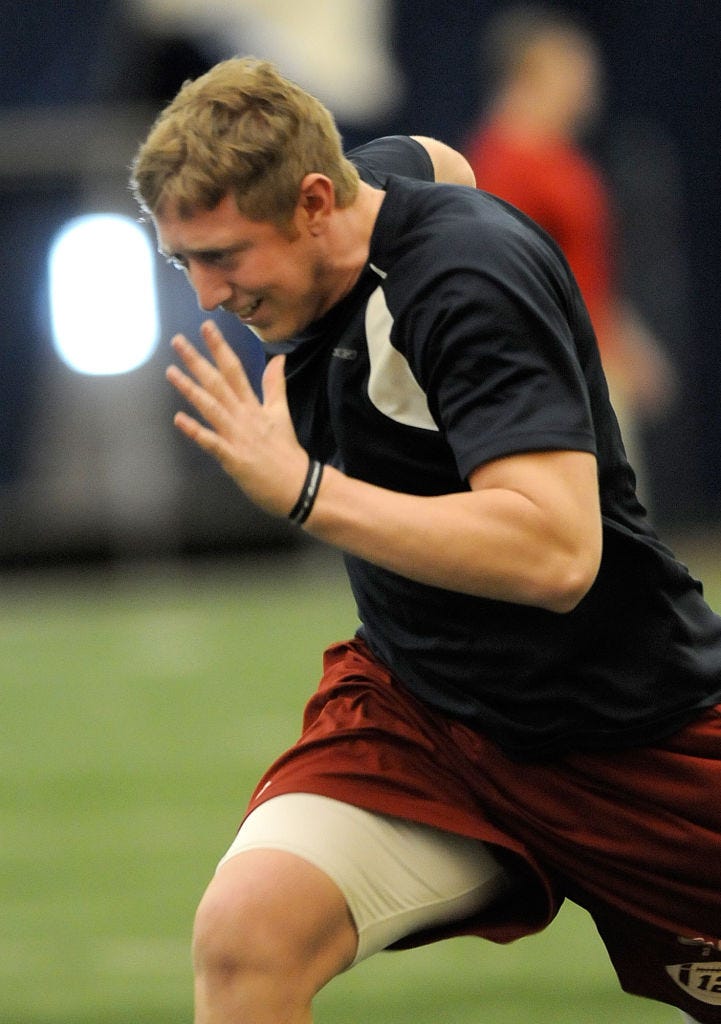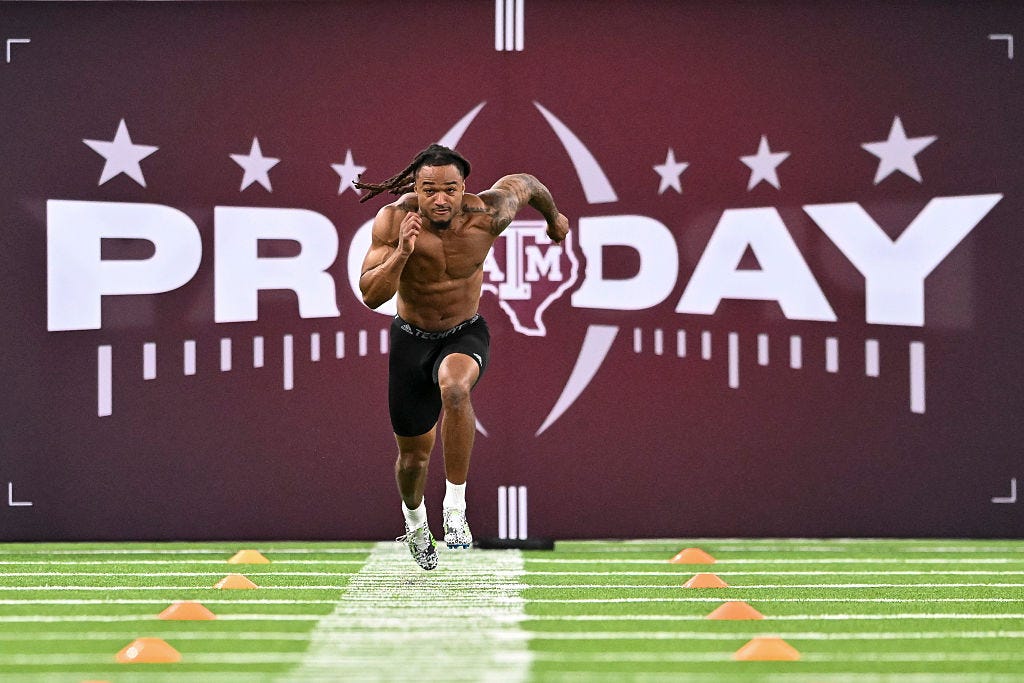What's Wrong With Pro Day Reporting?
Alex Katson goes over the confusing problem of Pro Day reporting — why we get conflicting times, what NFL teams actually do with Pro Days and why they're still valuable.
When Tetairoa McMillan ran a 40-yard dash at a surprise workout on Arizona’s campus on March 17, a familiar haze of conflicting reporting set in.
One of the most polarizing prospects projected in the first round of this year’s draft, McMillan had declined to run at the NFL Combine and skipped the Big 12 conference pro day, held just a few days later at the Cowboys practice facility in Frisco, TX.
His speed in question from his tape at Arizona, McMillan reportedly ran as fast as 4.46 in this workout. Fox Sports’ Jordan Schultz reported a time of 4.48. Sports Illustrated’s Albert Breer reported 4.54, 4.55, and 4.57 from three different teams in attendance. The Athletic’s Dane Brugler reported 4.55 from two different squads.
Video of the run was not available until two days after, a rarity for a workout held on a college campus. Except that video isn’t even of McMillan’s run at the workout. It’s from a training session he posted on his socials that was ripped by infamous aggregator account Dov Kleiman.
How do I know this?
Because the NFL’s pro day report says that Arizona’s workout, which included McMillan and fellow wide receiver Montana Lemonious-Craig, happened indoors. Kleiman’s post shows McMillan running outdoors.
Such is the reality of pro day season, a month of muddy narratives and poorly reported times and measurements following the NFL Combine that has become one of the most hotly contested parts of the NFL Draft calendar.
Simply add .05 to any pro day 40 time you see, say many, including a number of analysts. Surely, players like McMillan decline to run at the Combine to leverage favorable home environments and generous hand-timed runs, goes the conventional wisdom.
It’s not quite that simple. The reasons why are, however: pro days are not meant for the public.
The evolution of an event
Pro days have existed for a long time, although it’s not exactly clear how long. The oldest results I can find on Google referencing a pro day are from this ESPN article originally published in 2001 and re-published on the company’s website in July 2012 regarding Wisconsin cornerback Jamar Fletcher. Gil Brandt also published a 2013 article on NFL.com about watching LSU safety and current ESPN analyst Ryan Clark’s pro day in 2001.

Aside from Brandt, who published pro day updates on NFL.com starting in at least 2005, the events have largely been an afterthought on the NFL Draft calendar. A 2013 article from Breer on NFL.com asserts that pro days were losing importance for pre-draft evaluations, despite the purpose that they served.
But in 2021, with the loss of the NFL Combine due to the COVID-19 pandemic, pro days suddenly became the only way for teams — or the public — to get any information about prospects’ athleticism. The Combine had already grown tremendously in scope as the NFL Network expanded its television coverage in 2010 and the league began allowing fans in 2017, so the average fan was much more in tune with how important strong results in the testing events could be.
Along with the dual advents of Draft Twitter in the mid to late 2010s and Kent Lee Platte’s Relative Athletic Score (RAS), debuted in 2012, diehard fans on the internet had been conditioned to live and die by these testing numbers. Pro days were the only way to get them.
The pandemic, however, also meant that many pro days weren’t attended in person by NFL personnel. Results varied wildly as a result, with prospects turning in videos claiming to run in the low 4.4s in the 40-yard dash despite clearly not having such talent. This Wild West era amplified a public distrust in pro day times, a sentiment that still lingers to this day for a multitude of reasons, only a handful of which are legitimate.
Read More: Cameron Dantzler’s Unusual Pro Day/Combine Split
In the meantime, schools and the league have maintained a tight-lipped approach to pro days. Many schools decline to provide testing results to the public, usually citing respect for the scouts who made the trip to their campus. There is not a school, to my knowledge, that allows the public to freely attend pro day workouts. In their and the NFL’s mind, pro days are for the league, not for you.





